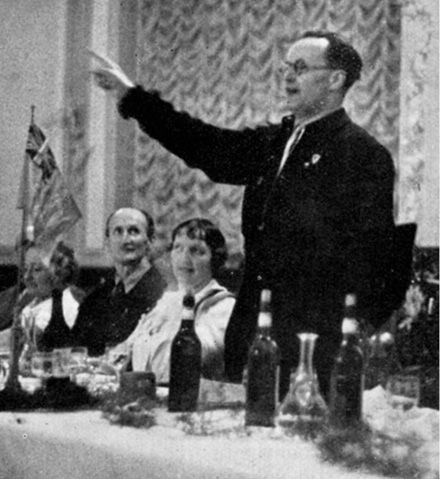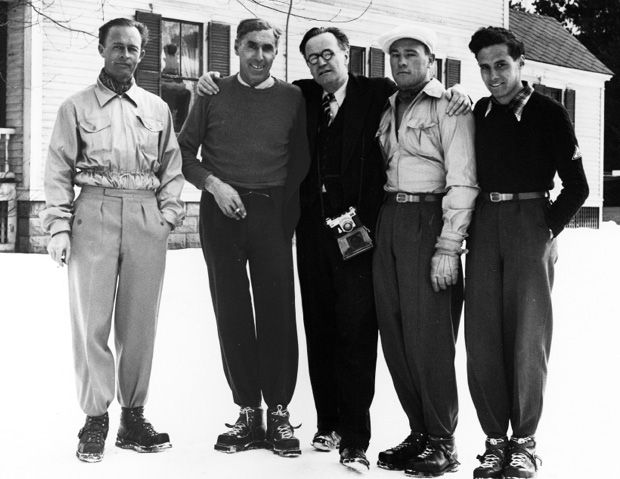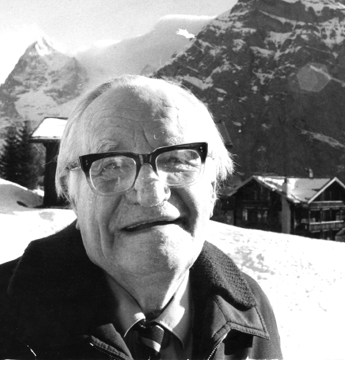
SKIING HISTORY
Editor Kathleen James
Art Director Edna Baker
Contributing Editor Greg Ditrinco
ISHA Website Editor Seth Masia
Editorial Board
Seth Masia, John Allen, Andy Bigford, John Caldwell, Jeremy Davis, Kirby Gilbert, Paul Hooge, Jeff Leich, Bob Soden, Ingrid Wicken
Founding Editors
Morten Lund, Glenn Parkinson
To preserve skiing history and to increase awareness of the sport’s heritage
ISHA Founder
Mason Beekley, 1927–2001
ISHA Board of Directors
Seth Masia, President
Wini Jones, Vice President
Jeff Blumenfeld, Vice President
John McMurtry, Vice President
Chan Morgan, Treasurer
Einar Sunde, Secretary
Richard Allen, Skip Beitzel, Michael Calderone, Christin Cooper, Art Currier, Dick Cutler, Chris Diamond, Mike Hundert, David Ingemie, Rick Moulton, Wilbur Rice, Charles Sanders, Bob Soden (Canada)
Presidential Circle
Christin Cooper, Billy Kidd, Jean-Claude Killy, Bode Miller, Doug Pfeiffer, Penny Pitou, Nancy Greene Raine
Business & Events Manager
Kathe Dillmann
P.O. Box 1064
Manchester Center VT 05255
(802) 362-1667
kathe@skiinghistory.org
Membership Services
Laurie Glover
(802) 375-1105
laurie@skiinghistory.org
Corporate Sponsorships
Peter Kirkpatrick
(541) 944-3095
peterk10950@gmail.com
Bimonthly journal and official publication of the International Skiing History Association (ISHA)
Partners: U.S. Ski and Snowboard Hall of Fame | Canadian Ski Museum and Hall of Fame
Alf Engen Ski Museum | North American Snowsports Journalists Association | Swiss Academic Ski Club
Skiing History (USPS No. 16-201, ISSN: 23293659) is published bimonthly by the International Skiing History Association, P.O. Box 1064, Manchester Center, VT 05255.
Periodicals postage paid at Manchester Center, VT and at additional mailing offices. Postmaster: Send address changes to ISHA, P.O. Box 1064, Manchester Center, VT 05255
ISHA is a 501(c)(3) public charity. EIN: 06-1347398
Written permission from the editor is required to reproduce, in any manner, the contents of Skiing History, either in full or in part.
The Two Worlds of Sir Arnold Lunn
"If not for the mountains my religion would be much too arid," confessed the celebrated convert, apologist and controversialist.
(Photo above: Lunn in May 1925, when with Walter Amstutz he made the first successful ski ascent of the Eiger. Photo courtesy New England Ski Museum)
The paths to faith are many, and they can be eccentric. Such was the conversion of Arnold Lunn in 1933. A British mountaineer and ski pioneer, Lunn was already famous then for his invention of the slalom race.
Mountaineers from time to time experience a spiritual, even profound religious feeling when they gaze upon the beauty of snow-capped peaks and the shadowed valleys below. Lunn profoundly shared that poignant experience. “The mountains were my door to the supernatural,” he wrote. “Their visible beauty was the initial impulse which led me to devote so much time in the years which followed to the most important of all problems, the real nature of man.”
Arnold was the eldest son of Sir Henry Lunn, Methodist lay preacher and author as well as visionary entrepreneur. In 1892, Henry organized a conference of ecclesiastics at Grindelwald, focused on re-uniting the splintered Protestant churches. It was an effort with little chance of success, but it led him to become a premier travel agent.
“The result of the Grindelwald Conference,” recalled Arnold, “was not—alas—the reunion of Christendom, but the foundation of a travel agency, later known as Sir Henry Lunn Ltd.” Lunn Travel ran tours to such Swiss resorts as Adelboden, Klosters and Grindelwald’s neighbors, Mürren and Wengen. Ten-year-old Arnold donned his first pair of skis when he accompanied his father’s earliest organized sports party to Chamonix in 1898.
The young man’s initial step toward supernatural awareness occurred in Switzerland when he was 19 years old, and a student at Oxford. During the previous year, by his own description, he had become “an agnostic, if not an atheist by belief.” Then it struck him. “I was resting on an Alpine pass after a climb (and) a sunset of supreme beauty,” he recalled. “Suddenly I knew beyond immediate need of proof that a beauty which was not of this world was revealed in the visible loveliness of the mountains. From that moment I discarded materialism for ever.”
Energetic Iconoclast

“enjoying the sound of his own voice.” New Englad Ski Museum
Following his Oxford studies, Arnold Lunn took up a writing career, and between 1907 and 1968 produced more than 50 books—nearly a title annually. In addition to 15 books on skiing and mountaineering and six travel guides, he wrote 30 serious books ranging across religion, philosophy, politics and autobiography. The alpine wonderment that propelled him from skeptical agnostic to fervent believer is scattered through his work.
Lunn’s enthusiasm for skiing was boundless. He originated the timed slalom race in 1922 at Mürren, Switzerland. In 1927, he and Austria’s most famous skier, Hannes Schneider, invented the Arlberg-Kandahar competition, having a combined result in downhill and slalom that exists to this day. For years, he edited the British Ski Year Book, one of the more literate sports periodicals ever published. So encompassing and detailed was Lunn’s writing and organizational work in skiing that it’s difficult to imagine he had time for anything else.
Lunn was influenced by the 19th century writers, poets and artists who articulated the beauty of the high mountains. In 1816, the young Byron, high on the Kleine Scheidegg in Switzerland’s Bernese Oberland, positively swooned at what he beheld: “Clouds rose from the opposite valley, curling up perpendicular precipices like the foam of the ocean of hell during a spring tide…the
glaciers like a frozen hurricane.”
The august Victorian author, critic and artist John Ruskin had “a genius for expressing his passionate love of mountain scenery,” wrote Lunn. It found expression not only in Ruskin’s prose but also in his painting. And Lunn was not alone in observing how the revival of Gothic architecture aroused Victorian England’s appreciation of the Gothic landscape of soaring Alpine peaks.
Lunn once described his experience on a ledge high above Zermatt, as he watched “the first wayward hints of colour creeping back into the rich gloom of the valley. And then, just as the sun leapt above the distant bar of the Oberland, a Church peeled out … a joyous carillon … re-echoed until the whole long valley … overflowed with spontaneous melody.”
Leap of Logic
Despite his spiritual arousal in 1907 at the age of 19, Lunn for the next 26 years was consistently disappointed by Protestantism, and decidedly unsympathetic to the arguments for conversion to the Roman Church. England was witnessing an extraordinary number of conversions—as late as the 1930s, some 12,000 a year. The Church welcomed literary celebrities, who came to include Evelyn Waugh, Graham Greene, and Malcolm Muggeridge. The Anglican Church was in decline. Should not one become a Catholic?
It was a popular discussion topic, and furnished a ready market for book publishers, and an opportunity for a professional writer like Lunn. His Roman Converts openly criticized Cardinal John Henry Newman, G.K. Chesterton, and leaders of the Oxford Movement who had become converts. Lunn was daunted neither by Newman’s fame nor by the illustrious Cardinal’s arguments, which he compared to misguided mountaineering. “For all their brilliance, (they) are too often like the tracks of an Alpine party wandering around a mist-covered glacier. Perhaps this does not matter,” remarked Lunn acerbically, “for all roads lead to Rome, even those which go around in a circle.”
So persuasive was his writing that in 1932 his London publisher commissioned a book, Difficulties, co-authored by Lunn and Monsignor Ronald Knox, himself a convert. In each chapter, Lunn furnished examples—such as the Inquisition and the treatment of Galileo—for why people should not join the Roman Church, while Knox sought to destroy Lunn’s line of reasoning.
Yet less than a year after the publication of Difficulties, a remarkable thing happened: Lunn himself became a convert. He was received into the Roman Catholic faith in July 1933 by none other than Knox, and recounted the story of his conversion in a new book, Now I See, published in November of the same year.
His conversion, Lunn confessed, was not a leap of faith. Rather, it was a decision founded on research and reason. He likened the scientific logic that he employed in studying snow surfaces and avalanche conditions to the historical analysis he used in proving Christ’s resurrection: “The mental process in both cases seemed much the same.”

It may have seemed the same to him, but not to critics, as witnessed by this letter from a friend: “My Dear Lunn: It was very kind of you to send me your book. I have often observed (that) when a writer goes over to Rome his work falls to pieces…I would have given all your pages on the infallibility of the Pope…for one paragraph on the argument which induced you to believe that bread and wine can be turned into the actual flesh and blood of a man who died nineteen hundred years ago.”
None of this deterred Lunn. He was a brilliant debater, controversialist, and a tack-sharp logician. His style of arguing was the same—whether exposing the underlying illogic of the fatuous Norwegian opposition to downhill and slalom, or of the claims to benignity by a Church that had tortured people in Inquisition. Lunn often fueled his arguments from his experiences in skiing. Two weeks before his death in 1974, at the age of 86, he wrote:
“A country ceases to belong to Christendom when the architects of public opinion begin to preach what they practise…I have seen the process at work in my own sport, ski-ing…Olympic shamateurism began with the highly paid Nazi ‘amateurs’ at the 1936 Olympics…What was of ultimate significance about Hitler and Stalin was not that they were anti-democratic but that they were anti-God and, therefore, anti-truth.”
Lunn was ahead of his time in attacking the failure of intellectuals to identify Stalinist communism as a form of totalitarianism. His mistrust of the Soviets later came into play when he fought the International Olympic Committee over the amateur status of athletes. IOC President Avery Brundage wanted to bar alpine ski racers from the Olympics for their acceptance of money from sponsors. Lunn argued that state-employed Eastern bloc athletes competing in the Olympics were just as professional as the western “shamateurs” taking payments under the table from businesses. In Lunn’s mind, the Soviets were as ruthless in the telling of lies to defend their version of ski competition as they were in their closing of Christian churches.
Inspirited by the Mountains
Lunn’s Christian faith—erected as it was on an infrastructure of syllogistic reasoning—left him feeling deprived. He envied the mystic or the simple peasant who had a direct phone line to God. “I envy the mystical just as the tone-deaf envy the musical,” he remarked.
“It has always been a distress to me that I have so few religious feelings. I have far too little feeling of being in contact with God when I say my prayers or even when I receive communion.”

But a commitment to religion as firm as Lunn’s is not brought about without an emotional component. “I should probably still be an agnostic,” he wrote to a priest friend in 1969, “if I had not felt an urgent need to explain the sense of worship which mountains arouse in me, and if it were not for the mountains, my religion would be much too arid, a synthesis of intellectual conclusions rather than a personal relationship with my creator … There are moments in the mountains when the words of the Sanctus rise unbidden to my lips.”
Lunn believed that writing about the mountains surpassed the literature of any other sport. It is impossible to describe snow and peaks “without unconsciously betraying your attitude to the invisible and mystical … Mountain literature is unique in sport, unique for its immense range of interests, physical and metaphysical.”
Lunn, who died in 1974, was knighted by the Queen in 1952 for his contributions to skiing and Anglo-Swiss relations. The honor should have cited his contributions to the literature of religion as well. 
Lunn’s voluminous correspondence can be found today in the Special Collections of the Georgetown University Library in Washington, D.C. This article is based on a paper presented by the late John Fry at the 2009 International Ski History Congress at Mammoth Lakes, California and excerpted in Commonweal (June 1, 2009). To read John’s obituary, see the March-April 2020 issue or skiinghistory.org/lives.

Table of Contents
2020 Corporate Sponsors

World Championship
($3,000 and up)
Alyeska Resort
Gorsuch
Intuition Sports, Inc.
Obermeyer
Polartec
Warren and Laurie Miller
Snowsports Merchandising Corporation
World Cup ($1,000)
Active Interest Media | SKI & Skiing
Aspen Skiing Company
BEWI Productions
Bogner
Boyne Resorts
Country Ski & Sport
Dale of Norway
Darn Tough Vermont
Descente North America
Dynastar | Lange | Look
Fairbank Group: Bromley, Cranmore, Jiminy Peak
Fera International
Gordini USA Inc. | Kombi LTD
HEAD Wintersports
Hickory & Tweed Ski Shop
Mammoth Mountain
Marker-Völkl USA
National Ski Areas Association (NSAA)
Outdoor Retailer
POWDR Adventure Lifestyle Corp.
Rossignol
Ski Area Management
Sun Valley Resort
Vintage Ski World
World Cup Supply, Inc.
Gold ($700)
Race Place | BEAST Tuning Tools
The Ski Company (Rochester, NY)
Thule
Silver ($500)
Alta Ski Area
Clic Goggles
Dalbello Sports
Deer Valley
Ecosign Mountain Resort Planners
Hertel Ski Wax
Holiday Valley
Hotronic USA, Inc. | Wintersteiger
MasterFit Enterprises
Metropolitan New York Ski Council
Mt. Bachelor
NILS, Inc.
Portland Woolen Mills
Russell Mace Vacation Homes
Schoeller Textile USA
Scott Sports
Seirus Innovations
SeniorsSkiing.com
Ski Utah
Snow Time, Inc.
Sports Specialists, LTD
SympaTex
Tecnica Group USA
Timberline Lodge & Ski Area
Trapp Family Lodge
Vuarnet
Western Winter Sports Reps Association
World Pro Ski Tour
For information, contact: Peter Kirkpatrick | 541.944.3095 | peterk10950@gmail.com
ISHA deeply appreciates your generous support!


